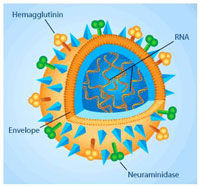Imaging Biomarkers
Large pharma has been seeking new biomarkers for years – all part of their drug discovery process, but often only as an afterthought in the development process. That’s changed over recent years, but by-and-large the bulk of biomarker work remains in the hands of small -to -medium-sized companies whose focused approach is more attuned to biomarkers being a major element of a final product.
Pharmaceutical companies have invested heavily in Translational Science (TS), both clinical and pre-clinical, to smooth the passage of compounds into clinical development. There are some excellent examples of effective uses of TS in developing biomarkers to select dose, evaluate efficacy and tolerability as well as some examples of patient selection.
Although the identification of biomarkers was previously an observational side product of clinical practice – it is quickly becoming an industrialised process. Companies are progressing in the movement from distinguishing between the biomarker targets found using rodent models, and those biomarkers found within a human model. More recently scientists have focused on discovery processes using proteins as biomarkers for various diseases, physical examination, laboratory assays and medical imaging.
Imaging biomarkers are most commonly used in clinical trials as ‘surrogate endpoints’; they are increasingly recognized as valid resolutions to trial problems. Rather than researchers waiting for traditional clinical endpoints of morbidity as indicators as to the efficacy of their clinical interventions, imaging biomarkers occur far sooner, and are often more accurate. Indeed, surrogate endpoints are finding measurements that may be used in clinical trials to evaluate the safety or effectiveness of a medical therapy for treating disease. They serve as an alternative to traditional trial endpoints and often may be gathered in a shorter timeframe or evaluated with higher confidence.
Many of the industry’s leading protagonists will meet at the Next Generation Drug Development Summit to discuss the return on investment for "non-surrogate" biomarkers, dose selection biomarkers and biomarkers of efficacy. Among the attendees will be Kalpana Merchant, CSO Translational Science at Eli Lilly; Mats Ferm, Director of Translational Sciences at AstraZeneca; Mark Fidock, Head of Quantitative Biomarkers at Pfizer; Paulo Fontoura, Head of Translational Medicine at Hoffmann La Roche; Martijn Rooseboom, Head of Drug Metabolism and Pharmacokinetics at Merck Sharp & Dohme and Trevor Howe, Head of Molecular Informatics Head of Biophysics and Structural Biology at Johnson and Johnson .
Imaging biomarkers hold out tremendous promise, but should not be considered a solution to all preclinical questions. If biomarkers are applied hastily or in a way that is not fully considered, they could provide incomplete or inaccurate results. A few such failures could reduce confidence in the concept of biomarkers within the research community. For example, a chemotherapy trial designed around an imaging biomarker, such as a CT scan measurement of tumour volume, could accurately demonstrate a meaningful therapeutic effect while completely missing cardiotoxicity. The fact that so many new drugs fail clinical development due to safety issues means that imaging biomarkers that can provide insight into toxicity would be valuable in their own right.
Ultimately, scientists and regulators are most likely to accept surrogate endpoints that have been well studied and characterised in large groups of patients, because such large studies are likely to minimize the possibility of unexpected and inaccurate results that might reflect limited experience within a given surrogate endpoint.
Most read news
Topics
Organizations
Other news from the department business & finance

Get the life science industry in your inbox
By submitting this form you agree that LUMITOS AG will send you the newsletter(s) selected above by email. Your data will not be passed on to third parties. Your data will be stored and processed in accordance with our data protection regulations. LUMITOS may contact you by email for the purpose of advertising or market and opinion surveys. You can revoke your consent at any time without giving reasons to LUMITOS AG, Ernst-Augustin-Str. 2, 12489 Berlin, Germany or by e-mail at revoke@lumitos.com with effect for the future. In addition, each email contains a link to unsubscribe from the corresponding newsletter.




















































